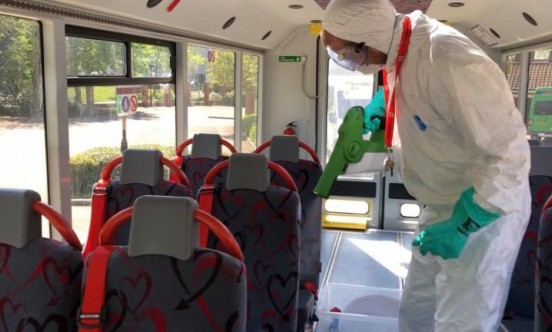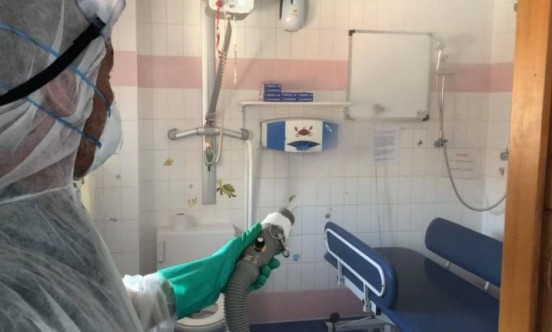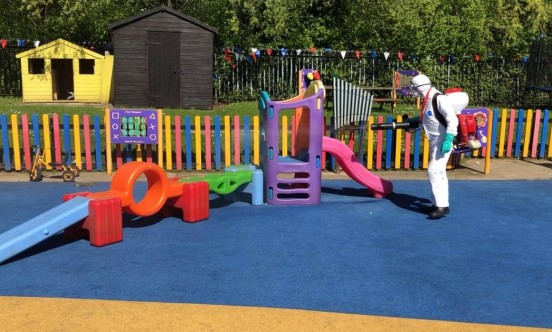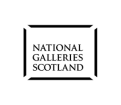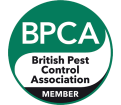
Call 0333 567 2020 for advice and quotes or contact us online

Supporting Bath and North East Somerset Council’s gull strategy
Gallery
Returning, multi-generational gull colonies causing problems to local residents
Since 2012 there has been an average increase of 11 breeding pairs of gulls settling in Bath each year. Gulls often return to the same nesting spot and will bring their offspring with them. The birds can live up to 35 years and start breeding at three, they can have up to two broods each year, which equates to around thirty chicks each decade. This means multi-generational gull colonies can increase exponentially if left unchecked and the birds will remain at the nesting spot for around six months of the year.
Such a large population brings with it problems relating to noise, mess and health and safety for residents and visitors to the city alike, rubbish collection day has proved to be particularly problematic. Bath and North East Somerset Council (B&NES) has had some success in addressing the issue through measures including: issuing gull-proof bags issued to businesses and households; deploying gull proof bins throughout public areas of the city; and a public education programme. This approach slowed population growth to just 1% per year between 2014 and 2015. However, the gull problem has become a particular concern to many residents and the Council wants to actively reduce numbers and culling is not an option.
Project Overview
The Georgian architecture of Bath Spa, where chimney stacks can have up to 12 pots – with space between each for a nest – makes for an ideal colony. Rooftops are also free of predators and offer gulls a vantage point to locate food.
Numbers in Bath and North East Somerset have grown rapidly, from 536 pairs in 2004 (Peter Rock: Urban gulls – problems and solutions, 2012) to upwards of 2000 birds at present. Bath and North East Somerset Council asked NBC to help.
Our Solution
Gull populations have been in recovery since they were granted protected status by the Wildlife and Countryside Act of 1981, which makes it illegal to kill or injure a bird, or to move or destroy an active nest. Gulls are moving inland and rooftop nesting has quadrupled across the UK over the past 15 years.
Gull behaviours and lifecycle mean they can become a recurring problem in particular locations. Both industrial areas and city centres offer plentiful opportunities to find food and the birds have adapted to scavenge from business premises, landfill sites and waste bins. A nesting site in close proximity to humans brings with it numerous hazards, and so-called urban gulls are becoming a nuisance bird across many parts of the country.
Reducing gull numbers the humane way:
B&NES kicked off its Gull Strategy in February 2016, allocating £85k in 2016/2017 and £57k in 2017/18. This is a three-pronged approach taking in a campaign to educate the public and businesses on reducing gulls’ access to food waste; a nest removal programme; and support for an 18 month research project into the interaction between humans and urban gulls in the region conducted by the University of the West of England and Middlesex University.
The Council contracted NBC Environment in March to manage the practical components of the initiative. Measures to deal with problem birds become more limited once gulls have established a territory and laid eggs, hence a focus was placed upon bird deterrents and nest removal.
Efforts were focused on areas of the city where there were already significant or growing numbers of breeding pairs. Free surveys and roof treatments to remove gulls’ nests were offered to residents and businesses in the Abbey, Kingsmead, Newbridge, Twerton, Westmoreland and Widcombe wards.
It is only legal to remove eggs and nests up to the point the chicks hatch, incubation is 31 days and young gulls hatch in June and July. Therefore, those qualifying were asked to contact NBC Environment to schedule an assessment before the end of May. Over 200 surveys were booked within that timeframe. Notable locations treated included Bath Guildhall, the train station and the SouthGate Shopping Centre.
Assessments were carried out from the ground where possible, a mobile platform and hawks were used to prevent interference from the gulls during nest removals. The programme ran through the April and May during breeding season and following an initial survey, nests were checked again within a 21 day time period, when feasible, to ensure another brood had not been laid.
It’s also possible to discourage gulls from settling in an area in the first place by making a habitual nesting spot less attractive, inaccessible or appear more risky. To that end, falconry was also used in the specified wards to deter gulls from nesting. Harris’s Hawks were used because they are manoeuvrable enough to work in urban locations and gulls also aren’t used to them because they aren’t native to UK.
There goes the neighbourhood:
A successful programme taps into gulls’ natural instincts to modify patterns of behaviour at critical points in the breeding and life cycles. By disrupting the annual routine NBC Environment is able to make an established nesting area less desirable.
In total 469 nests and 1,141 eggs were removed over the period of the breeding season. There were only a few nests in each ward that NBC Environment was unable to treat safely.
Also, any animal’s key motivator is self-preservation. In time persuading Bath’s gulls there is an active population of large birds of prey in a particular area will discourage them from scavenging in those wards.
More information on our gull control services
Read our informative articles Nuisance Birds - Gulls and How To Get Rid of Seagulls.
